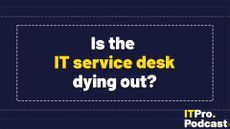Sponsored by Amazon Business
Meeting procurement needs in a time of uncertainty
Knowing where your supply dependencies lie and establishing backups is just as important as cutting overall costs

As businesses seek to insulate themselves from the shocks of a rapidly changing world, many are looking to reduce their operating costs. At the same time, business leaders recognize that the road to long-term success will involve better preparing one’s procurement processes for the crises of the future, by making one’s organization more adaptable to change and less reliant on any one vendor.
The global supply chain shocks of the past few years have left business leaders in little doubt over the importance of supply chain resilience and ensuring their procurement is stable even in adverse conditions.
In Digital Optimization Paves the Way to Strategic Supplier Management, a recent report by Harvard Business Review Analytic Services, business leaders underlined the importance of both reducing costs and improving their procurement resilience by becoming more flexible.
The report took in responses from 271 respondents, largely made up of high-level managers in medium to large enterprises.
Over half (54%) of respondents cited being able to quickly switch suppliers in the event of supply chain shocks as one of the biggest challenges facing their business. It’s here that existing solutions such as e-commerce sites can play a major role for organizations, as they give procurement managers far simpler and quicker access to product information, allowing them to seamlessly make purchases.
Online platforms can make this process far easier by bringing a range of suppliers under one roof, notifying them of the organization's specific product needs and the regularity of its restocking. When new office supplies, software licences, or kitchen items are needed, suppliers can easily be found and chosen. If a business is keeping track of its own stocks properly, purchases can even be automated to coincide with when a specific product is running low.
E-commerce sites can also automatically generate procurement data, so leaders can create an up-to-date map of their supplier relationships and work to establish redundancies in areas where they may be reliant on sole suppliers. For example, if an organization has previously had issues with its materials suppliers, it can look to pinpoint exactly when issues commonly arise, as well as which companies are behind them, and establish alternative suppliers.
Although online procurement lets business leaders easily adopt or drop suppliers, relatively few respondents in the study said they are looking to change the size of their supplier base. Under a quarter (23%) identified broadening their supply base as a priority and just over one in ten (11%) were looking to narrow their supply base.
Online orders via dedicated business-to-business (B2B) websites also play an important role as a central hub through which organizations can easily make purchases with their existing suppliers and also scope out potential new ones. Having access to partners – both known and unknown – in one place improves the agility of any business, as in the event of major disruptions with an existing supplier another can be found without having to upend any systems. All that changes here is where the spending is going.
These online purchasing portals can prove invaluable for indirect procurement, that which doesn’t directly factor into a business’s product exports but is nevertheless critical to its continued operations. In the tech world, indirect procurement could mean software licensing for productivity tools used by a company’s workforce. It could just as easily mean toner for the office printer or coffee for the machines in the canteen.
Data-driven decision making
In addition to the ease of placing orders online, leaders recognize the need to make more informed decisions over suppliers based on data analytics is a key aim. As many as 40% of all respondents said improving data collection and analytics was a top priority for their business.
Unlocking these improvements is possible through the better oversight and organization that digital services offer, as well as the automation of costly or time-consuming processes using machine learning (ML) and AI. More than two-thirds (72%) of respondents expressed hope they could improve operational efficiency by digitizing their existing processes, with 58% tying this goal to that of reduced costs.
Leveraging supplier data, businesses can interrogate their current relationships to identify where they may have unwanted costs, who their most reliable suppliers are, and even to predict whether certain suppliers are likely to expose them to chaos or risk in the near future.
But achieving all of this will require better collection and processing of supplier data. To make data-driven decisions on their suppliers, organizations need to carefully track information such as the total spend associated with each supplier, their compliance, credit details, and financial reliability.
It’s here that many organizations continue to struggle. While respondents to the study recognize using supplier data properly is a central pillar for any data-driven procurement strategy, 41% of respondents state their current data tracking and analysis as good or very good and over a quarter (26%) would actively describe it as poor or very poor.
Just 24% of respondents say they usefully track the majority of their supplier data to feed into decision-making, nearly matched by 22% who say they have no idea at all how much of their supplier data is usefully collected or analyzed.
Even basic supplier data like company names and listed addresses are only captured by 79% of respondents, leaving over a fifth with no current path to analyzing their procurement arrangements on any meaningful level.
Nevertheless, as time goes on the researchers expect to see early investments in advanced digital analytics come to fruition for the businesses involved. E-commerce stores will act as enabling tools here, with the ability to automatically track and analyze spending on a company’s website, while a drive to better understand the pros and cons of each supplier and their trustworthiness with regard to long-term procurement will feed into more concerted efforts to capture supplier data.
With 59% of respondents engaged in some form of advanced analytics, and 21% at an early adoption stage with new systems designed to give better oversight of their current procurement approaches, business leaders are setting themselves up to not only cut costs but inform timely, risk-averse decisions and insulate themselves from future shocks.
Get the ITPro daily newsletter
Sign up today and you will receive a free copy of our Future Focus 2025 report - the leading guidance on AI, cybersecurity and other IT challenges as per 700+ senior executives
ITPro is a global business technology website providing the latest news, analysis, and business insight for IT decision-makers. Whether it's cyber security, cloud computing, IT infrastructure, or business strategy, we aim to equip leaders with the data they need to make informed IT investments.
For regular updates delivered to your inbox and social feeds, be sure to sign up to our daily newsletter and follow on us LinkedIn and Twitter.
-
 Is the IT service desk dying out?
Is the IT service desk dying out?ITPro Podcast Employees could soon use chatbots to resolve common IT issues rather than wait for tickets to be resolved
By Rory Bathgate Published
-
 Warning issued over ‘fast flux’ techniques used to obscure malicious signals on compromised networks
Warning issued over ‘fast flux’ techniques used to obscure malicious signals on compromised networksNews Cybersecurity agencies have issued a stark message that too little is being done to sniff out malware hiding in corporate networks
By Rory Bathgate Published

